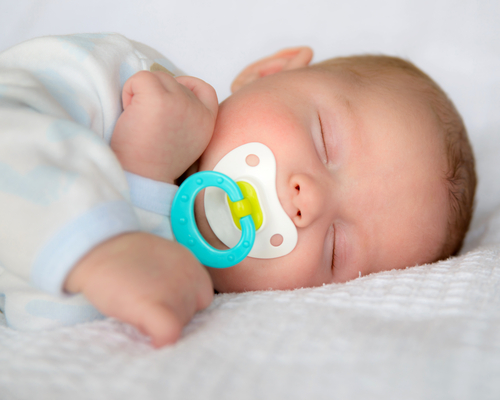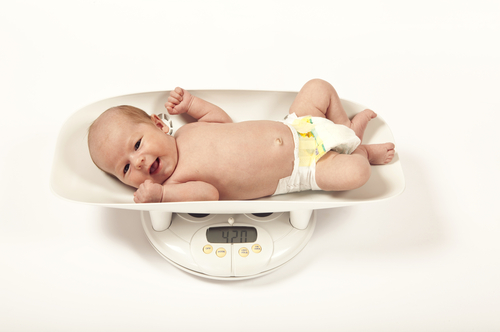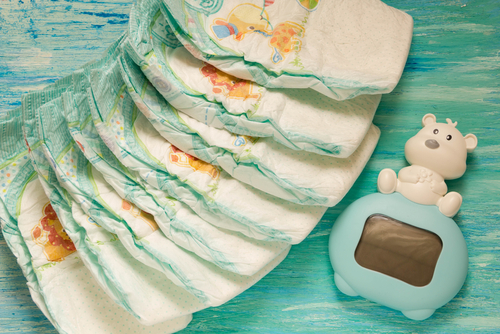

This problem can arise immediately after the birth of the baby, when initially the child does not take the breast or, when applied to the breast, sucks it sluggishly, briefly, and then gives up crying, or this happens some time after a successful start breastfeeding. In this case, breast refusal can manifest itself in different ways:
Some newborns take time to learn how to attach and feed properly. At first they feed first, and then they become fussy. These problems can be very frustrating: Get help if the following ideas don't help.
Sometimes a baby who is feeding well does not seem to want the breast and may cry and push away. This can happen at any time, but often within 3-8 months. This can be very frustrating because the child doesn't want you. It is important that you know that this does not mean that your child is rejecting you. This usually doesn't last long. If you are patient and continue, breastfeeding usually improves on its own.
In any case, such behavior of the child cannot be considered as a reason to stop breastfeeding. The mother needs to figure out why the baby refuses to breastfeed and make every effort to maintain and restore breastfeeding. The reasons for such a “boycott” may be different. Let's look at the main ones.
There can be many reasons why a baby does not latch onto the breast. Baby reasons. Sore throat, ear pain or blocked nose - gastro-esophageal reflux - itching in the mouth, doing breastfeeding as an infant, as children get older, they empty the breast faster and become fussy if you push them to the painful ability - baby wants to look at other things, is easily distracted and therefore stops feeding. This is usually after 3 months, when babies grow more slowly, so they are not as hungry as before. The baby used the mannequin at an early age before breastfeeding starts well, or at an older age, suck on the mannequin, satisfy the baby's sucking needs. In the early stage - overly rough breasts can lead to excessive reduction when your milk squirts into your baby's mouth very quickly and they are unable to coordinate sucking swallowed spots braided nipples can cause some difficulty in attaching your baby and lead to fussiness and refusal of delivery milk supply is low, or you have a lot of milk that comes in too quickly for babies to taste milk hormone changes - when your periods start again, you start using birth control pills, or if you become pregnant, you ate something else, exercised just before smoking the food before food. By the time they are 3 to 5 months old, babies can take a lot of milk in 2 or 3 minutes. This may upset or frighten your baby and make her less likely to want to be near the breast. Serve in a quiet, dark room. Dive into different feeding positions. Serve when baby is asleep or asleep. This often works well. Feed more at night, especially in hot weather. Walk around and pet your baby or use a rocking chair while feeding. Sing, rock, wrap or massage before feeding as this may help calm her down. Prepare the milk and then place the baby on the breast. Get your baby to thumb suck or dummy and then quickly slide into the breast. Have your child checked by your doctor if you think there is a health problem. Try to keep your baby on your breast, on the skin, near your chest.
Most often, this problem occurs in weakened children with an unfavorable course of pregnancy and difficult childbirth. For example, prematurity, oxygen deprivation during childbirth, damage to the nervous system, and birth injuries lead to the fact that, due to the delayed maturation of centers in the brain, the sucking reflex is not expressed in the child at the time of birth. If such a reflex exists, but the baby is very weak after birth, he sucks little and sluggishly, gets tired quickly, drops the breast and falls asleep.
This can cause the tongue to be held down so that it cannot move forward along the child's jaw and lip, and the child cannot push the tongue out very far. If the tongue tie is heavy, it can affect breastfeeding, causing problems such as sore nipples or poor nutrition because the baby cannot attach to the breast properly. In these rare cases, the frenulum may be cut to free the tongue so it can move properly. This may help relieve pain during breastfeeding, and baby may attract more nipples and areolas to the mouth, making sucking and swallowing easier. In most cases, a tongue tie is not a problem, and it does not usually affect speech development.
The most common reason a child refuses to breastfeed is the use of a bottle, which the mother uses when supplementing the child with expressed milk or formula, or a pacifier. No nipple can replicate the shape of a woman's nipple. In this regard, sucking on the breast, pacifier and nipple on the bottle occurs differently with the participation of different muscles. When sucking a pacifier, the muscles of the cheeks are involved; when sucking the breast, the muscles of the tongue are involved. A child who is accustomed to sucking a pacifier begins to latch onto the breast in the same way. He experiences what is called “nipple confusion.” The baby cries and does not take the breast. In addition, when sucking a bottle, the baby puts in a minimum of effort and no longer wants to work when feeding from the mother’s breast.
However, in recent times, frenulum trimming has become a common practice as it is known to aid breastfeeding. While these types of stories seem to have become less common, there may be hiccups and arrests occurring since President Obama signed the Bottle and Breastfeeding Equipment Screening training last year. Friends told me their stories from the checkpoint - cowering as their containers of liquid gold were opened, staggering and sniffing at the bewildered security agents.

One mother was asked to take a sip of the material to prove it was not dangerous. Another watched in horror as her breast milk leaked all over the X-ray machine. Here are some ways to reduce your anxiety and chances of crying over spilled milk.
It might be helpful to print out the page and highlight key lines like "You don't need to travel with your baby to bring breast milk" if you're on a business trip or, you know, childless getaway to Molokini. Security does not allow you to taste your breast milk, but agents may ask you to open bottles. They may smear the outside of the container.
If a nursing mother's breasts are tight, then milk does not immediately come out of the glands when the baby tries to suckle. Milk production occurs normally, but it is difficult to separate. This situation can occur with individual characteristics of the structure of the mammary gland or if the breast is overfilled with milk. In this case, the mammary gland becomes too dense, which does not allow the baby to grasp it correctly and begin to suck. He tries to do this, he doesn’t succeed, the baby drops his breast and starts crying.
Announce what it is right away. She also recommends using the word "medical", a lot. Frozen breast milk makes it easier to transport, but liquid form is also great if you have a cooler and an ice pack. Breast refusal is a normal thing that can happen to any child, but it is especially heartbreaking for a working mother. She worries that her child is rejecting her because she works. She thinks that it is her fault that the child did not take the breast.
All children have cardiac failure, even those who are constantly with their mother. The good news is that with the right intervention it usually only lasts a couple of days, and your baby can do just as well without breastfeeding for a couple of days. The challenge is that your baby is probably getting bottles all day long, which makes treating breast refusal a little more difficult and it may take a little longer, but don't be afraid - it can be done and before you know it, your baby will will return to nursing again.

If a nursing mother has flat or inverted nipples, it may be difficult for the baby to adapt to sucking at such a breast. It is important to remember here that with proper attachment, the child should not grasp the nipple, but the entire areola. Therefore, when breastfeeding, it is not the shape of the nipples that is important, but the ability of the areola and breast tissue to stretch during sucking.
No one has yet been able to ask one of the babies, but there are many theories about why breast refusal occurs. So-called "nipple confusion" is the main culprit - the baby gets used to the fast flow of milk from the bottle, and becomes impatient waiting for milk from mom, or doesn't want to do the extra work to get it. Other theories are that after about 4 months, your baby begins to pay much more attention to the world around him and becomes more distracted during feedings.
Maybe she is bottle fed face to face where she can see what is going on and doesn't want to miss anything in the breast. She may simply be busier and not want to sit still when you are ready to feed again. Regardless of the reason for breast refusal, the treatment is basically the same - make the breast available all the time, without pressure.
In this situation, two options are possible:
Unless your baby has a medical problem, she will drink from the breast when she is hungry. Providing a bottle confirms that if your child can handle it, she will get an easy meal.
Think about the fact that you won't be able to go anywhere without your pump. Anyone looking to wean a baby quickly realizes that it is not easy for a baby to make the transition from breastfeeding to regular baby bottles. While chest sucking requires special technique and quite a lot of force, the baby spills from the bottle when drinking milk. This is why breastfeeding babies often drink too much and drink too quickly, causing them to swallow a lot of air along with the milk. The consequences are colic and vomiting.
In both cases, most often the baby gains little weight (the average monthly gain in the first 3 months of life is approximately 800 g), and the number of urinations decreases (less than 6-8 times a day). A child in the first months of life should urinate at least 10 times a day.
It is easier for the baby to change layers if the nipple is as similar to the breast as possible. The ideal is a soft material that can be completely covered by the lips. Special anti-coccal valves on the nipple regulate the flow of food, similar to breastfeeding, moving with the rhythm of breastfeeding, leaving air in the bottle. The drinking hole should be small so that the child drinks slowly and does not vomit later. When the hole gets in and gets bigger, replace the nipple.
Glass bottles would be a better material, they are hygienic, environmentally friendly, easy to clean and not easily scratched. On the other hand, glass pots are heavier than plastic bottles and are not suitable if the child wants to drink for themselves because they can break.

Let dad go! By the way, there is no need to cook baby milk, fresh for every meal. Prepared puffs can be made up to 24 hours in advance as long as they are carefully sealed in the refrigerator. They should always be heated in a hot water bath because in a microwave oven the contents of the bottle are heated very irregularly, which is unhygienic. There is also a risk of burns.
If you want to start a trial run with the bottle, let's do the daddy first. Because with lures the mother's breasts, and the child does not understand why he has to suck on a plastic thing. If the purchased baby milk does not taste small, it is better to squeeze pumped breast milk into it, then breast milk diluted with breast milk, and only now pure baby milk. And if all this is useless, and the next generation does not want to know anything about the bottle? Try a small mug. Often breastfeeding babies drink well from the very beginning.
The most pleasant smells for an infant are the aroma of mother and breast milk. He begins to distinguish them almost immediately after birth. A newborn looks for his mother's breast by smell and sleeps better next to her, because for him the mother's smell means warmth and calm.
Does milk equal milk? Breast milk has been shown to be best for a baby with a six-month breastfeeding period without feeding. If a woman is unable or unwilling to breastfeed, well-developed and safe infant milk is available. They are optimally adapted to the needs of the child and copy the composition of breast milk quite well.
Sometimes it's a big problem. Only in rare cases does the offspring voluntarily introduce a suppository or bitter juice. Termination, beating, or running away are common abandonment strategies. Read here what parents can do to make sure their little ones are still taking the medicine they need.
If a nursing mother uses perfumes, deodorants, or shower gels with a strong smell, this can confuse the baby. He feels a foreign, unpleasant aroma, does not recognize his mother and refuses to breastfeed. Undoubtedly, the only thing that can be advised in such a situation is not to use products with a strong smell, and if the mother feels that the baby does not like the aroma emanating from her, she should wash the skin with baby soap and put on different clothes.
It would seem so good - there is a lot of milk, the child will not go hungry, but even here there are difficulties. If the mother produces too much milk, it quickly flows out of the breast, the baby does not have time to swallow it and chokes. This causes fear in the baby, and he turns away from the breast, stopping to suck.
If a baby older than 3-4 months, after sucking a little at the breast, begins to turn away and is distracted by any noise, this cannot be regarded as refusal to breastfeed. Most likely, he entered a period of active development and knowledge of the world around him. During this period, the baby becomes interested in everything, and he strives not to miss the opportunity to learn something new. As a rule, such children eat often and gain weight well. You can check whether your baby has enough milk with this sucking regimen by doing a “wet diaper test.” This test is based on counting the number of times a child urinates per day. If there is enough milk, there should be at least 10–12.

Refusal to breastfeed may be one of the symptoms of the baby's incipient illness. In this case, it is important for the mother to assess the child’s condition, try to find out what is bothering him, and, if necessary, consult a doctor.
With thrush (a fungal infection), small white spots appear on your baby's tongue, gums, and cheeks that look like sores, or they may coalesce and look like white coating. Inflammation of the mucous membrane causes the baby pain and discomfort during breastfeeding, and as a result, this can lead to breast refusal.
Swallowing movements during otitis media are associated with acute pain in the ears. To check whether your baby’s ears hurt, it is recommended to apply gentle pressure on the tragus of the ears. With otitis media, the child reacts to pressure with strong and sharp crying.
Children of the first year of life have some structural features of the nasopharynx, so even a slight runny nose can cause a lot of trouble for the baby. Narrow nasal passages and swelling of the nasal mucosa, which occurs during inflammation, lead to the fact that it becomes difficult for the baby to breathe, he cries when feeding, chokes (it is difficult for him to suck and breathe through his mouth at the same time) or completely refuses to take the breast.
The reason for breast refusal may be teething. This is due to the painful sensations in the mouth that arise during this process. In addition, cutting teeth may be indicated by increased salivation, a desire to gnaw, bite and pull into the mouth, redness and swelling of the gums.

Intestinal colic or cramping abdominal pain begins at about 3 weeks of age and lasts up to 3-4 months. This is due to the immaturity of the digestive system in a newborn baby and low enzymatic activity. Attacks of crying with intestinal colic can also appear during feeding, then the baby stops sucking and begins to cry for a long time and hysterically. At the same time, he twists his legs (either pulling his knees towards his stomach, or stretching them tensely), his tummy is swollen. The baby refuses to eat, takes the breast and immediately throws it away. Relief comes from passing gas or defecation.
A baby with a short hyoid frenulum usually has difficulty initially latching onto the breast. If he succeeds, the sucking process occurs with great difficulty, since he has to strain his muscles unnecessarily and gets tired quickly. The baby begins to worry, be capricious and refuses to breastfeed.
A baby's refusal to breastfeed is a serious test for a mother. It requires a lot of patience and a desire to continue breastfeeding. As a rule, nursing mothers who understand the importance and necessity of breastfeeding for a child manage to cope with temporary difficulties and continue natural feeding.
What to do if the child does not want to take the breast - the source of his joys, refuses it or sucks sluggishly? Why does this happen, and how to fix it?
No one needs to be convinced of the benefits of breastfeeding, convenience and mutual pleasure for both the baby and his mother. But in the process of establishing lactation (the production of milk by the body of a nursing mother), problems may arise. One of the most unpleasant things is that the baby cries and does not take the breast, refusing it himself. The reasons why the baby rejects the mother's breast can be described briefly - either the baby or his mother is unwell.
Content:
Voluntary cessation of breastfeeding may be a symptom of an incipient illness in the infant. If the lack of appetite is accompanied by a rise in temperature (above 38 degrees), loose stools, vomiting, uncharacteristic drowsiness for a baby, or severe anxiety, as well as a runny nose or cough - do not hesitate to consult a doctor.
Sometimes the baby may greedily take the breast, and then stop sucking and start crying. This often happens in cases where a baby has a stuffy nose. Then he needs a consultation with an otolaryngologist. For example, in case of ear pain (at this age, due to a runny nose, the ears can very quickly begin to hurt) or thrush (in the case of infection with Candida fungi in the oral mucosa), the child’s refusal to breastfeed is a completely logical phenomenon, since breastfeeding is difficult and uncomfortable. Then the baby cries, does not take the breast, and loses weight because he is hungry and sick.
If you replace the breast with a bottle, this will not solve the problem in any way - it will still be painful and uncomfortable for the baby to suck. Plus, to one physiological stress of the baby (illness), another will join (cessation of breastfeeding), and this will only worsen the baby’s health.
The fact that a child does not want to breastfeed may indicate the presence of damage to the baby’s central nervous system, which could have occurred in the womb, during birth, or in the first days after birth. In such cases, the baby sucks sluggishly, does not take the breast well, he is extremely restless, there may be a trembling of the chin (tremor), frequent regurgitation, and shuddering. It may seem that it is physically unpleasant for the baby to suck, for example, because of a headache. Or the baby gets tired very quickly while sucking the breast, then the baby gives up the breast in exhaustion after 2-3 minutes.
If such symptoms appear or if the certificate from the maternity hospital contains an indication of PEP (perinatal encephalopathy), then you should contact a pediatric neurologist with your baby. At the same time, try to find the most optimal option for breastfeeding: it may be better to feed the baby your expressed milk from a cup or spoon for the first few weeks, or you can try doing this from a syringe or pipette.
The main thing: try to maintain breastfeeding. But it is not advisable to use bottles, despite the fact that sucking from them will certainly be easier if the hole in the nipple is not too small. However, there is a high probability that subsequently the baby will not want to take the breast at all, and will strain to “get” milk. When the baby gets a little stronger (the little man’s nervous system and brain are endowed with excellent recovery abilities), you can switch back to the usual way of feeding - breastfeeding.
Trust your own baby and do not rush to deprive him of what he needs.
 A common reason for infants who are only a few days old to refuse to breastfeed is “pre-breast” sucking on a pacifier or bottle-feeding the baby in the maternity hospital. The baby does not understand why such changes occur, it scares him, and the child cries and does not take the breast.
A common reason for infants who are only a few days old to refuse to breastfeed is “pre-breast” sucking on a pacifier or bottle-feeding the baby in the maternity hospital. The baby does not understand why such changes occur, it scares him, and the child cries and does not take the breast.
Sometimes problems can arise due to improper attachment of the baby to the breast or engorgement of the woman’s mammary glands - the breasts become tight and it is difficult to suck on them. If the baby does not latch on the breast, the reason may lie in feeding strictly according to the schedule, and not at the request of the baby, or for too short a time, in the opinion of the main consumer. It happens that a baby does not breastfeed if the mother does not have enough milk. As a result of such reasons, the child sucks sluggishly or may even refuse, he becomes restless and capricious.
When there is too much milk in the mother’s breast, the newborn may choke out of habit, swallow excess air during feeding, and then the baby’s tummy often begins to ache.
It happens that the child does not take one breast, which has characteristics of the nipple or inflammatory changes in it.
Often a child does not want to breastfeed when there are changes in the taste of milk. This often happens from 3 to 12 months after birth, when the mother’s menstrual cycle returns. At this time, breast milk takes on a somewhat salty taste. This may also be explained by a violation of the mother’s diet, when she eats overly hot and spicy foods.
Among other things, the reason that the baby does not breastfeed may be a change in the mother’s smell, for example, due to a change in soap, perfume, or deodorant.
Less often, a child does not breastfeed well due to changes in the baby’s usual way of life, for example, such as the appearance of strangers in the house, the mother going to work, or a new nanny.
If a child does not take the breast at the age of 6-8 months, in most cases we are talking about the baby’s imaginary refusal to breastfeed. Now the baby is actively crawling and learning the world in a contact way, but without observing him as before, and all these events can distract and captivate him. Even in his sleep, he can continue to experience new emotions and often wake up at night.
 Whatever the reason that the baby does not suckle, sucks sluggishly or refuses altogether, the main thing is to eliminate this reason! Try to carefully analyze the situation and help your baby and yourself begin to enjoy breastfeeding again.
Whatever the reason that the baby does not suckle, sucks sluggishly or refuses altogether, the main thing is to eliminate this reason! Try to carefully analyze the situation and help your baby and yourself begin to enjoy breastfeeding again.
If there are problems, try to be with the baby at all times and offer the breast whenever he wants, at his request, including at night. Put away pacifiers and bottles. Of course, the baby is unlikely to approve of such harsh measures, but do not give up, do not despair, believe in your own strength and in the natural intelligence of the child. A few days - and everything will definitely get better.
Make sure your baby's position at the breast is correct during feeding. The baby should grasp the entire nipple circle with his mouth, and not just the nipple of the mother's breast. The baby should be happy and calm during feeding, completely pressed against you, you can hear how the baby sucks out and then swallows the milk - without retracting the cheeks or smacking sounds.
If there is not enough milk for the baby, try to eliminate any stressful situations, especially fears and worries about the lack of breast milk. Try to rest longer, sleep in your baby’s “sleep mode” (or take a nap at least once during the day). Any household chores, including street walks with a baby in a stroller, can be done by someone else, but the happiness of breastfeeding a baby is given only to you.
Try to maximize the number of feedings, give both breasts at one feeding: first one, and when he “empties” it, the other. Remember to ensure that your diet includes at least 2 liters of fluid per day. You can try folk and homeopathic lactogenic remedies. And be sure to support yourself psychologically, don’t forget about yourself: you will only need one hour to go to a beauty salon, to the store for something new that will please your eyes, or to a cafe with a friend to drink a cup of green tea.
What to do if the baby does not want to breastfeed because there is too much breast milk? Usually in the first days of the onset of lactation, approximately 3-4 days after birth, there is too much milk coming in. In this case, it is advisable for the mother to reduce her intake of liquids, especially warm ones, as well as food. The advice here is simple, but very effective! Your baby is still weak, the baby sucks sluggishly, so at first it is recommended to express the excess with a breast pump. This will help prevent breast congestion and engorgement. Try to take a warm shower before each feeding (then your breasts will become softer and milk will “give” easier) and set yourself up for success. Soon the baby will get stronger and grow up, and your body will adjust the production of milk in the amount it needs.
There are certain breastfeeding rules that should be followed, namely:
Mommy may face some difficulties at first. But you shouldn't give up. If you can’t cope on your own, contact consultants for help to establish breastfeeding. Ask to teach you how to attach your baby correctly while still in the maternity hospital, gain experience from other, more experienced mothers.
Don't worry and remember the most important principle of breastfeeding: in the event of normal developments, breast milk will form in your breast exactly as much as your baby needs. Soon this will happen, and then no breast refusals will threaten.
A little more about why a baby cries and does not take the breast, and how to deal with your baby’s refusal to breastfeed: